Happy February, Mariners’ family!
I hope you all had a lovely holiday season and a great start to the New Year. I wanted to give you all a quick update about Princess Carolina aka Ronson because we have some exciting stuff happening!
As I’ve talked about in prior blogs (click here for an introduction to the project and here for my most recent post), we’ve spent quite a bit of time over the last year or so researching treatment options for the Princess Carolina timbers that have acidic areas. This is an issue seen in archaeological ships across the world (Vasa, Mary Rose, etc.), making it a valuable area of research as we continue working to preserve our maritime heritage. I’m excited to share that we’ve officially started treatment testing to mitigate this issue on a few of the small timbers!
We’re testing several products, some of which are in nanoparticle form meaning they’re extremely small. This provides more “active” surface area for the products, and therefore more efficiency, hence all the fuss about this technology! The counterpart of working with such tiny particles is that they have to be handled with extra safety precautions. So, the first step of the experiment was safely preparing the products we would be testing in a glove box.
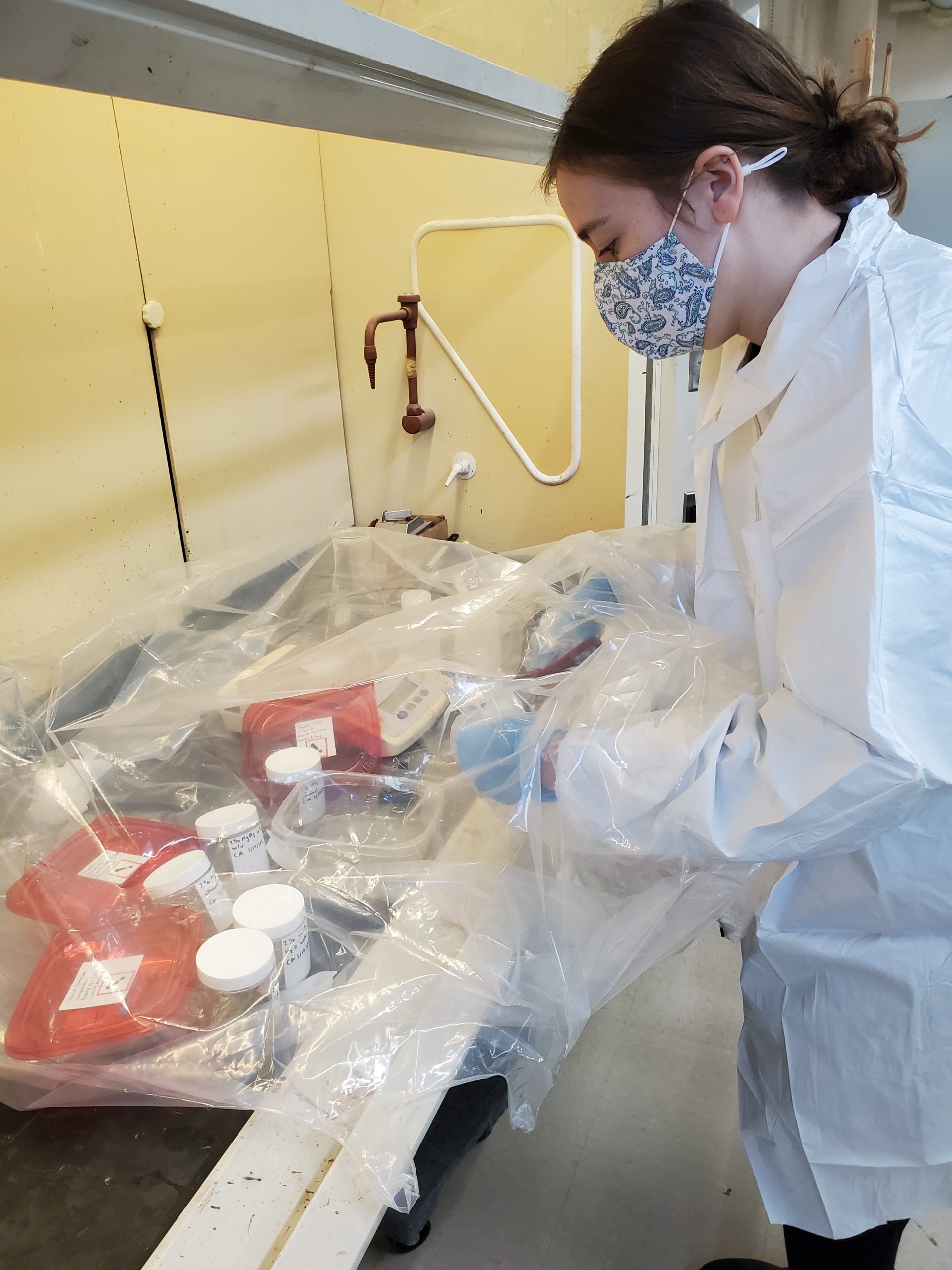
Another reason we’re using products in nanoparticle form is because some of them happen to be insoluble in common solvents (e.g. water or ethanol). This makes it difficult to get the products into the timbers effectively. By using a smaller particle size, the product can penetrate the timbers more readily.
Adding an insoluble product to a solvent creates what is called a “suspension” (as opposed to a “solution”). This means the product isn’t mixed in and will likely agglomerate in one part of the container (e.g. at the bottom). Since our nanoparticle products were suspensions, we had to use an ultrasonic bath (a machine that uses ultrasonic vibrations to agitate fluid) to disperse and homogenize the products in the solvents prior to applying them.
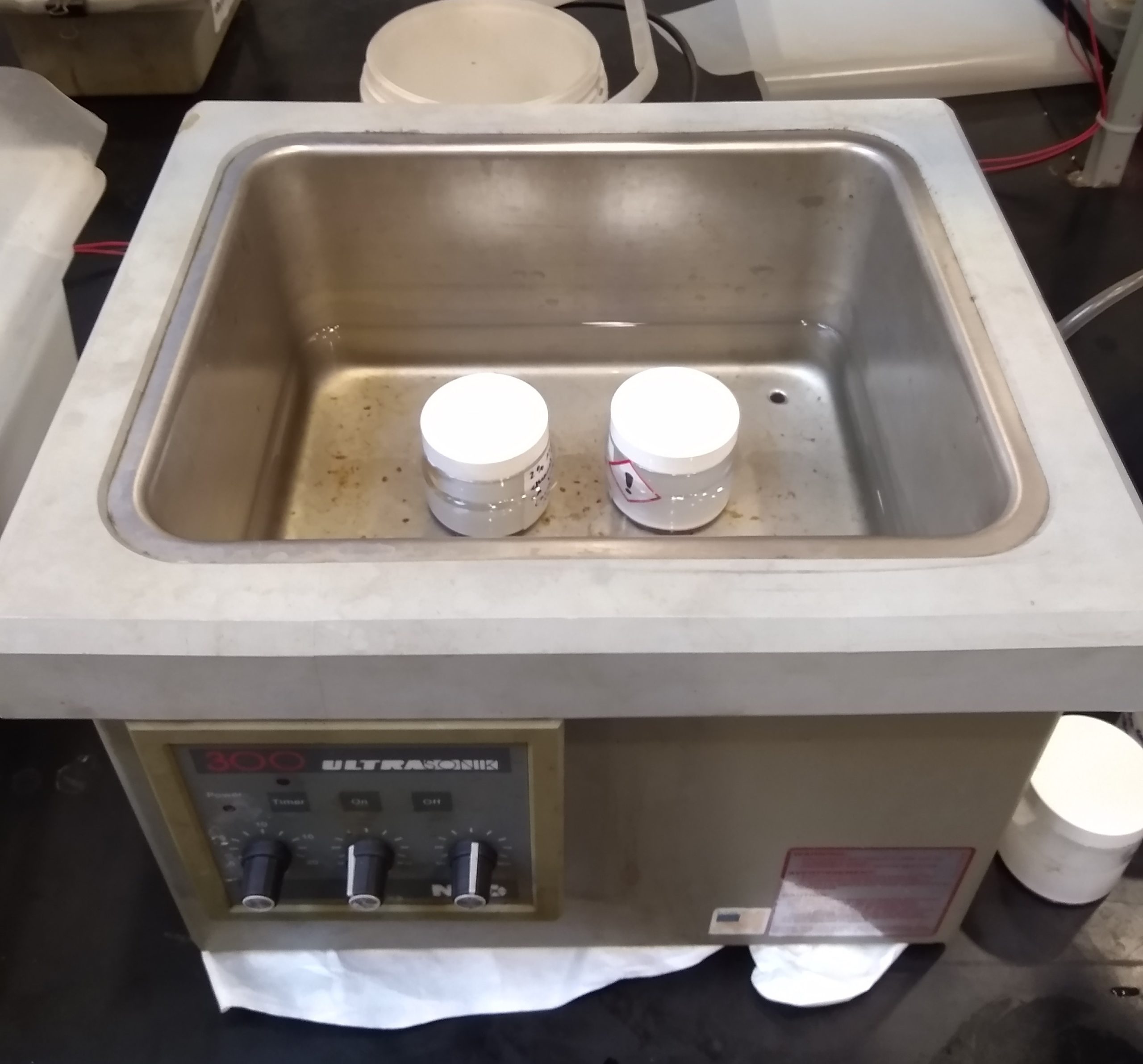
Once the products were prepared for treatment, we were able to officially start the treatment testing process! We began by measuring the pH of each testing area so we knew how acidic the wood was before treatment. As a side note, in order to have statistically reliable results (and therefore publishable results), each pH measurement must be repeated at least 3 times. That part of the project alone is time consuming!
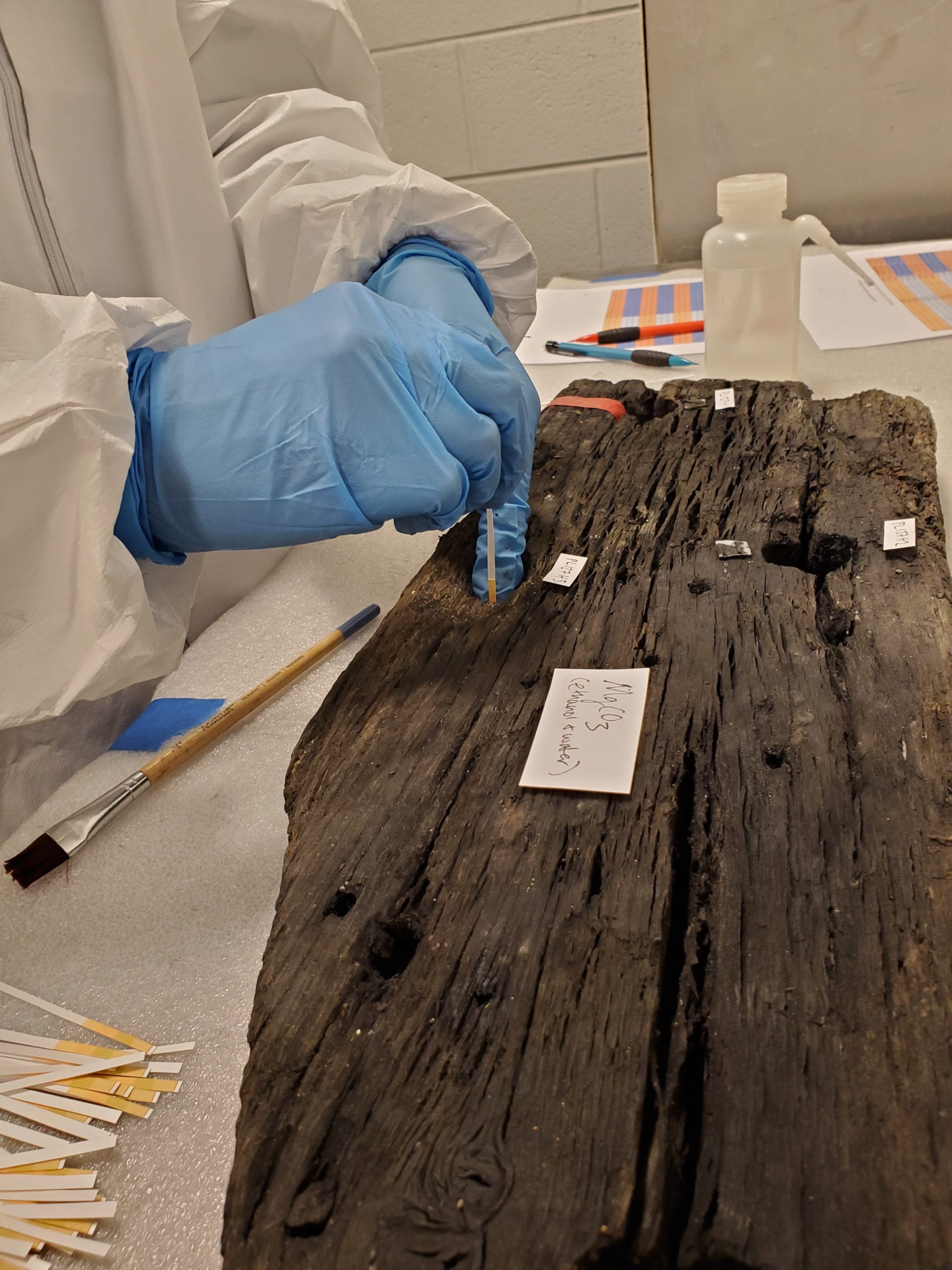
Next, we used syringes and brushes to administer the products to the test areas both on the surface and further into the wood structure.
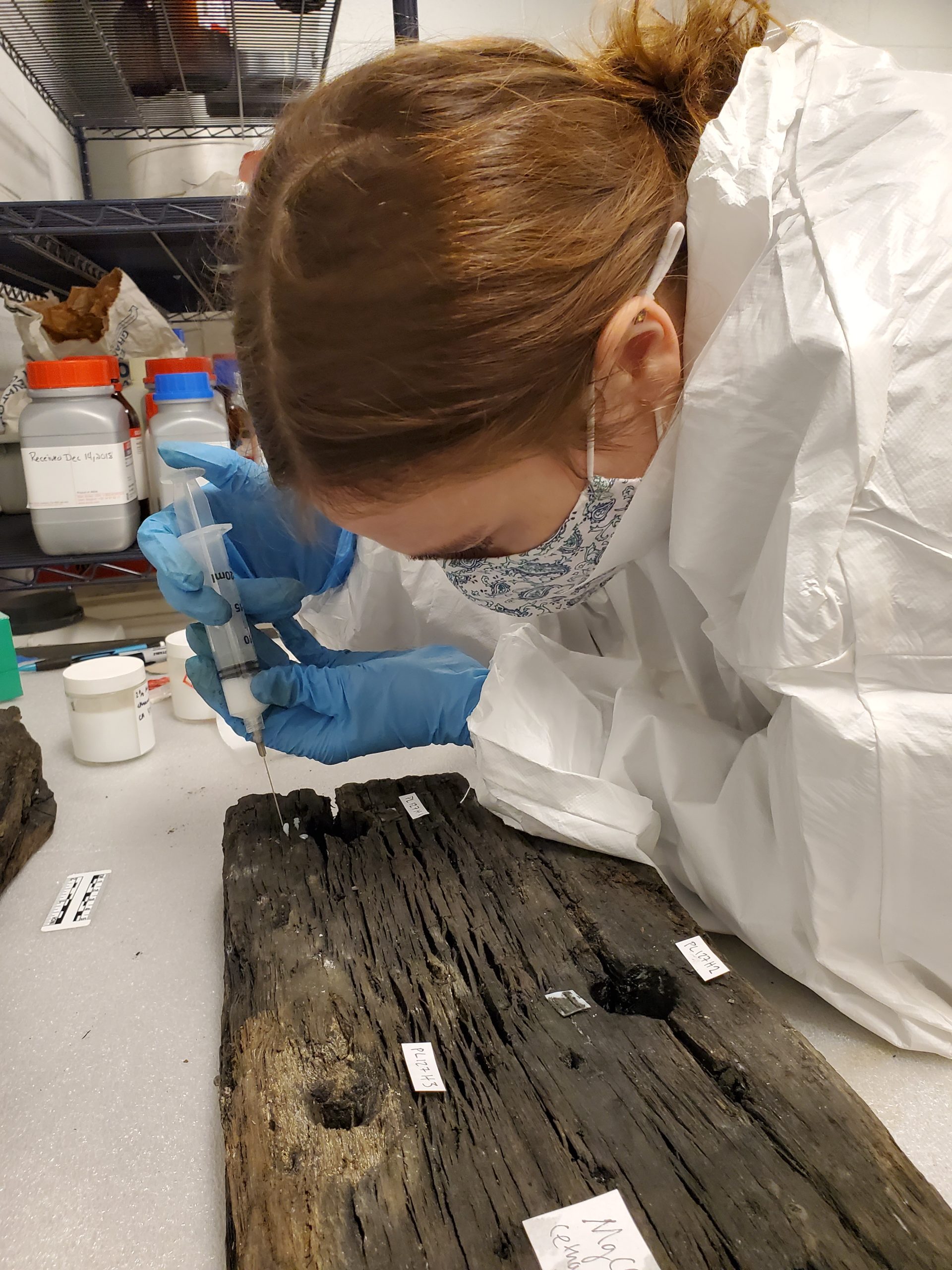
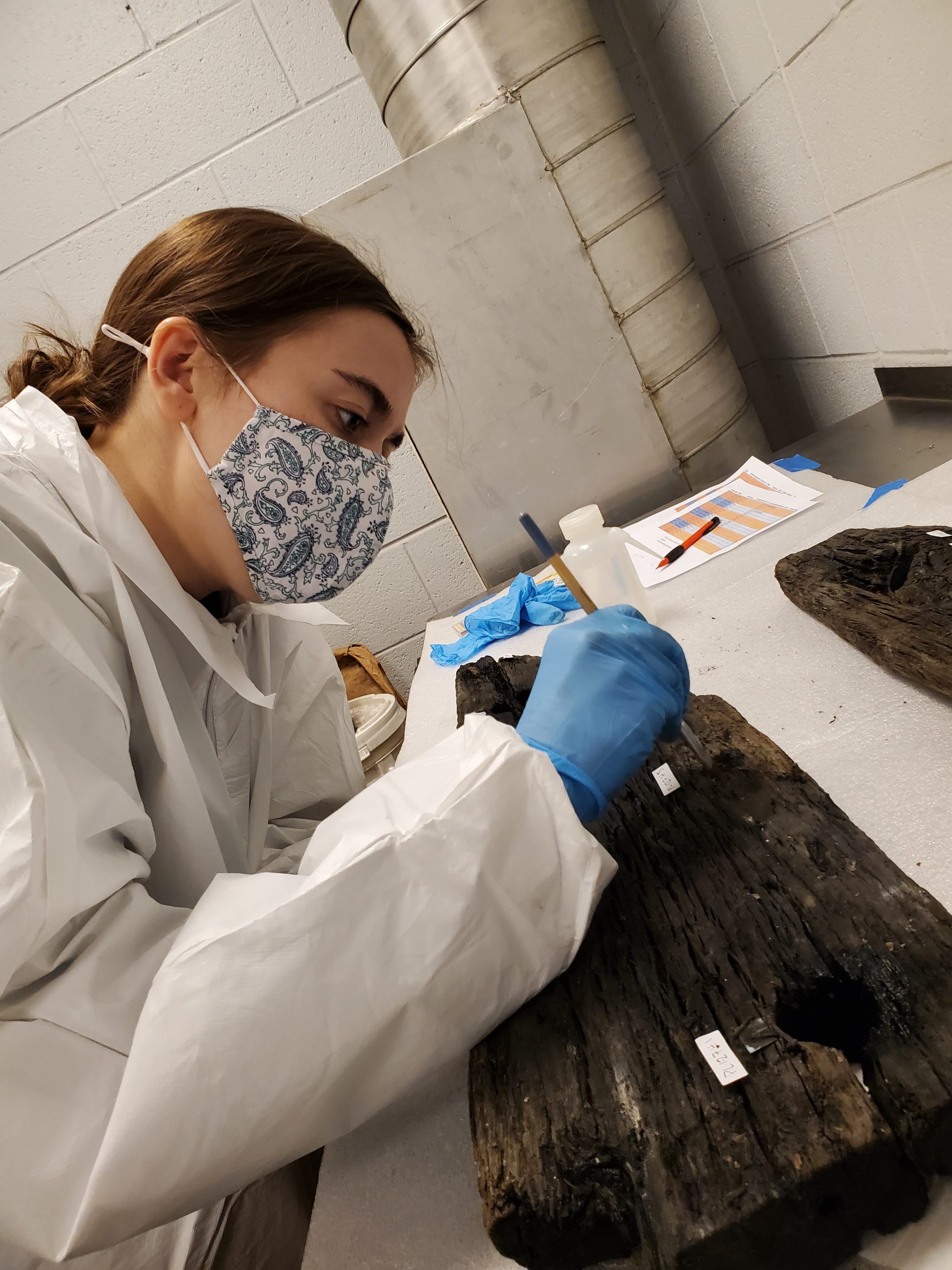
After that, we allowed the wood to dry and then re-applied. We’ll continue with that process until we’ve determined that treatment is complete (i.e. consistent acceptable pH levels) and hopefully we’ll have some promising results!
Another part of this project I’ve been working on is preparing to treat three small artifacts that were found as part of Princess Carolina’s fill material. I chose objects that had a variety of material types and degradation issues, so I’ll be able to continue expanding my treatment knowledge/skill. You can see two of the artifacts I’ll be treating below and some of the interesting challenges I might face (e.g. voluminous corrosion formation, multiple materials, etc.).
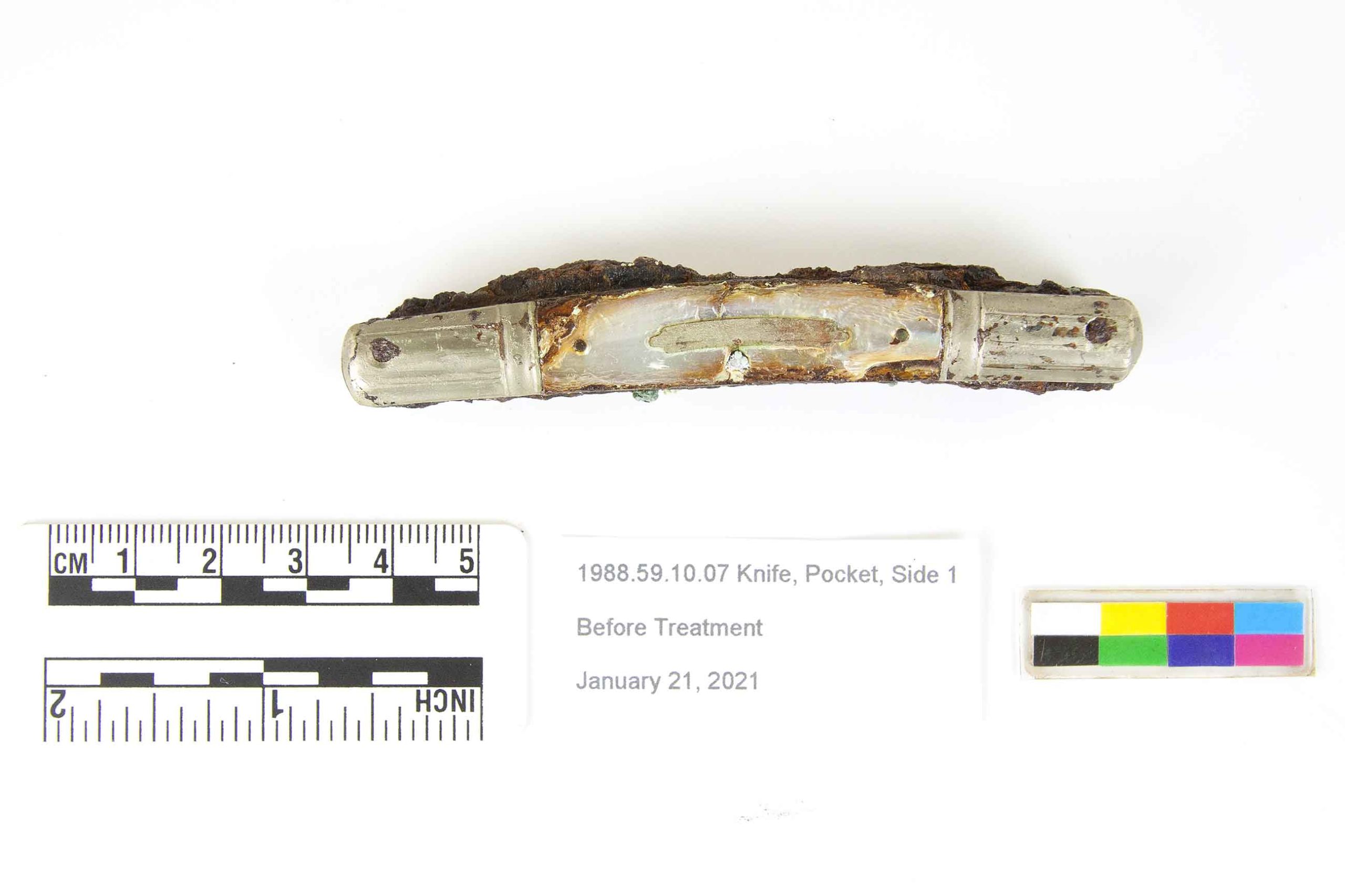
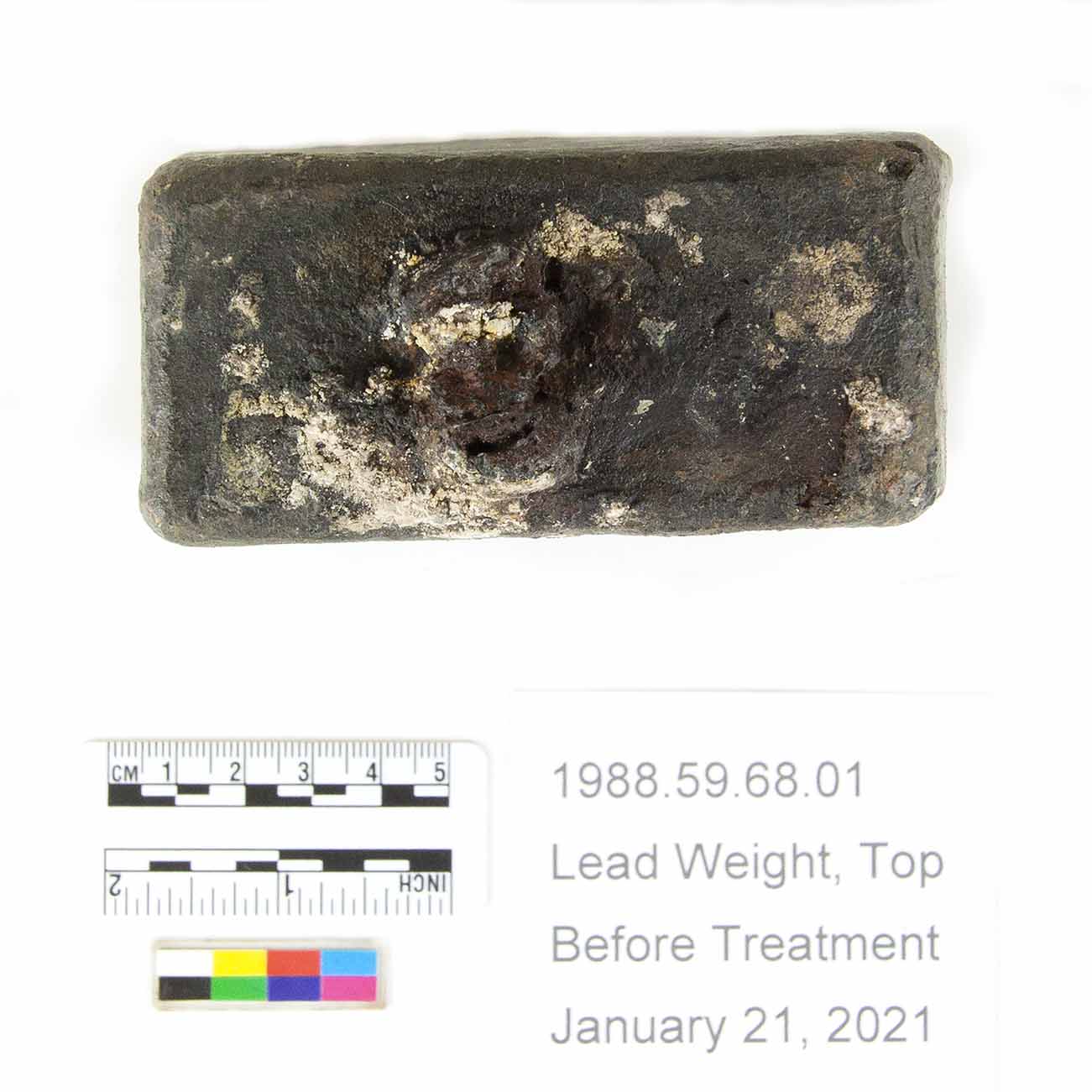
Right now, I’m working on the next step of the conservation process which includes analyzing and documenting the artifacts to write treatment proposals. These are important steps to ensuring the objects are carefully inspected and appropriate plans are created to stabilize them. I’ll give you all an update about this a little later as I move further along in this process!
I look forward to keeping you all posted as we continue to take this awesome journey working with the Princess Carolina collection. Have a good weekend and stay safe!